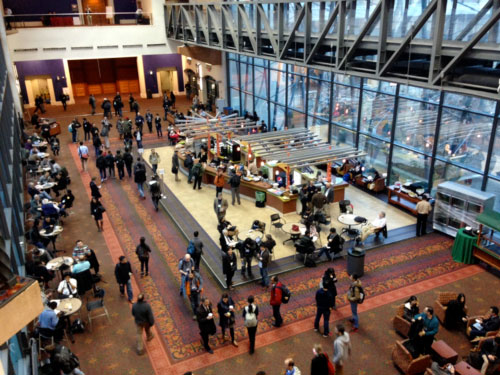
March maze. The conference centre for the APS meeting.
By Michael Banks in San Antonio, Texas
After finally getting my head round the maze-like Henry B Gonzalez Convention Center in San Antonio, it was straight into a packed schedule at this year’s American Physical Society (APS) meeting.
One topic that always causes concern among researchers is the crunch in helium supply.
Helium is an important commodity for condensed-matter physicists as it is widely used to cool experiments to temperatures of about 1 K. Yet the gas is also heavily used in industry – especially by semiconductor manufacturers.
Dwindling helium reserves and increasing demand have seen the cost of the gas rise. But with academic users making up just 3% of the total use, they don’t have much clout when it comes to getting a fair price. Indeed, researchers in the US can pay anything between $8 to $30 per litre.
Speaking at the meeting yesterday, Mark Elsesser from the APS talked about recent plans by the society to get universities to come together to form a “supergroup” that could collectively bargain with suppliers to provide a stable helium price that everyone involved would pay.
Elsesser reported that so far about 30 universities across the US have signed up to the programme. He was asked what kind of price this new group could hope to secure, but he didn’t get into the numbers, only suggesting it would be a fair price.
This Helium-4 problem has been around for quite a few years, because more and more of it is being used in massive neutron detectors to neutron-scan trucks and other systems at the airports and othe places. To make the situation easier, one has to work efficiently on its recuperation after its use in different experimental systems.
There were over 30 groups that expressed interest in the program, but the pilot group is currently 7 members. We started with a small number of groups as a test case to see if having DLA procure liquid helium makes sense for academics. Depending on the pilot program’s success, we will expand the program accordingly.
My apologies if the enrollment numbers weren’t clear.
Trackback: Physics Viewpoint | Weighty matters